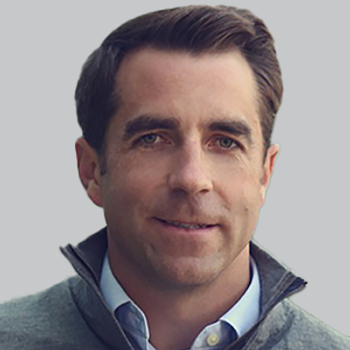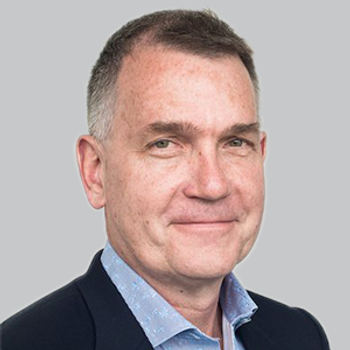
Putting Pen to Paper: Executing on Approaches for Neurorestoration

Joe Kardine, MS, OTR, CBIS, the clinical program manager at the Jefferson Center for Neurorestoration, discussed the influx of new neurorestorative technology and the future of treating patients with functional loss.
This is a 2-part interview.
In the past, occupational therapists and rehab specialists have relied mainly on physical exercise as the main form of improving functional loss in patients with neurological conditions or stroke. With the expansion of technology, including innovations like the NuroSleeve powered arm brace and muscle stimulation system, the capabilities to treat these patients have expanded. This custom-fitted approach assists in helping patients to achieve voluntary control over their arm and hands, thus allowing them to perform functionally beneficial tasks of daily living.
Most recently, researchers at the Jefferson Center for Neurorestoration at Thomas Jefferson University evaluated the NuroSleeve in a small cohort of 20 individuals with various neurological conditions. To see whether patients could gain control over the technology, investigators, including
While these approaches highlight the significant advancements made within the space, the process of implementing them comes with caution, Kardine said. In a recent interview with NeurologyLive, Kardine, the clinical program manager at the Jefferson Center for Neurorestoration, discussed the way neurorestoration has changed, and how it will continue to change over the coming years. He stressed the need to utilize, tinker, and perfect innovative ideas, rather than have them collecting dust in a storage facility.
NeurologyLive®: How applicable and accessible is this approach for in-clinic settings?
Joe Kardin, MS, OTR, CBIS: On an institutional level, those are some of the conversations we've had with other sites and with other universities. Most importantly, it's understanding the logistics of what it means or what takes place for a patient to get fitted for the device. The personnel that we utilize is industrial design and engineering, with the software to scan. That's not my background, so I'm using very loose terms; however, we're fortunate that our industrial designer is an OT [occupational therapist], and I'm an OT as well. That collaboration is wonderful, and we can kind of go back and forth on things. Understanding what that software is, how to scan someone's arm using that technology, then transferring that file into a transcribed double applicable software to print the pieces to the device, and then the device gets put together by our engineering team. That's my understanding of the process from afar.
It does sound a little complicated, if that's an environment you're not used to. But, on a manufacturing level, that's what it would look like. Who can utilize this in training or needs to be trained to deploy this? Any OT or PT can be in an interventionist in trial. People that have a background in neurological rehab and have experience working with neurological populations, and even people with experience in orthopedic populations, which relates to the neurological world with this trial. The goals are broad, and it's about function. The personnel to be involved is also pretty broad on the therapeutic end. if you think on a big scale, even at an institutional level, it's more understanding those principles of what you need to have, or at least know what resources you need to have to then deploy with patients.
How has the center and field previously tackled lost arm function?
Speaking generally, a lot of restoration happens early on after the injury. Speaking for the bigger rehab hospitals and the bigger institutions that have access to collaboration with technology, a lot of the technology use does take place in that acute rehabilitation platform where the equipment is large, expensive, requires training, there's a lot of safety that goes into using it, and it requires some insight into why you're using it. Obviously, a lot of the restoration happens early on. It's safer to do in an institution because of the complexity of the patients, and so technology is a must at that level because of how much more you can accomplish with the patient. It’s also engaging. It's fun—it does look a little scary, I'm sure, to some—but it's very important at that level.
As the patient moves through their recovery into outpatient, yes, some outpatient centers do have the same technology, based on the availability to them, but not all outpatient places have it. It's vital to their recovery. Again, the earlier the better, based on neurological principles of rehab and science. What we've seen over the years is that your history shows what is possible. However, what was thought to be not possible is now possible with a center like ours and other research centers around the country. Recovery doesn't end after your first or second plan of care and therapy. Technology or not, there are technological advances happening all the time, and outcomes are shown and there are improvements being made. A lot of focus does need to go into these technological advances that we're making to give people hope and give them a chance. They're still trying to recover, no matter how long it's been, and we do have to think about them. That’s why we make these advances because we get to help people on that level. The more creativity and innovation that people are putting in is showing, and neurorestoration principles are changing.
What is your confidence in the state of neurorestoration right now? Which areas need improvement?
There has to be a lot of awareness in science. There has to be a lot of awareness of, are we continuing to do the same thing, and what's not working? Me coming from a rehab world into a more innovative leadership role, my confidence is absolutely there. Because there's so much, we don't know how to change, and that’s what innovation all about. Yes, movement and exercise are all helpful, but if you're doing it incorrectly, then you're not necessarily helping people. From the technology side, if you're making technology that is more just stagnant and it's not changing neuroplasticity, then you're doing the same thing over and over again, it just looks different. It might look bedazzled, or it might look very plain off the shelf. That's super important that we all need to be aware of, as people trying to change the lives of others. You have to make sure that you’re doing something different, and you have to be willing to fail at it. It's okay to fail and know that it didn't work, but you have to go back to the drawing board and work on it again.
There are so many different things happening, even neurosurgery and neurology and different areas of medicine, whether it's procedural or therapeutic. With the complement of rehabilitation, all those things need to come together, too. Not to just talk about our center, but that's what I love about our center. We took those areas of specialty here and brought it all together. We had people collaborating that when you walk down the street, they don't talk to one another, and they wouldn't know too. That's been eye-opening for all of us across the entire department and enterprise in a way. You get people talking, and you get people's brains at the table, and you start to make changes. It can be slow progress, but I mean, we feel we're helping people, and we're making those changes. We're excited to help show others that. We talk with colleagues from other health systems and share what we're doing with them and help them do similar things. I hate to be cliche, but it is a little bit of a perspective people need to shift in the innovative healthcare world, or else, some people will do the same thing over and over again, and some people will make changes, and that's what I have seen so far as to be beneficial for us.
Transcript edited for clarity.
Newsletter
Keep your finger on the pulse of neurology—subscribe to NeurologyLive for expert interviews, new data, and breakthrough treatment updates.









































